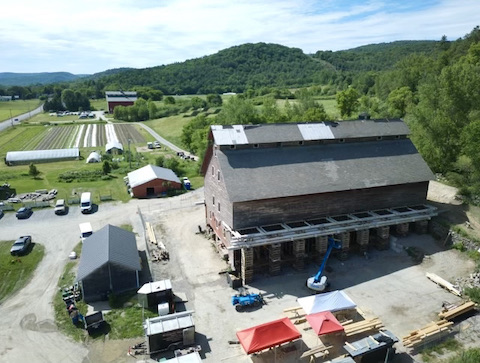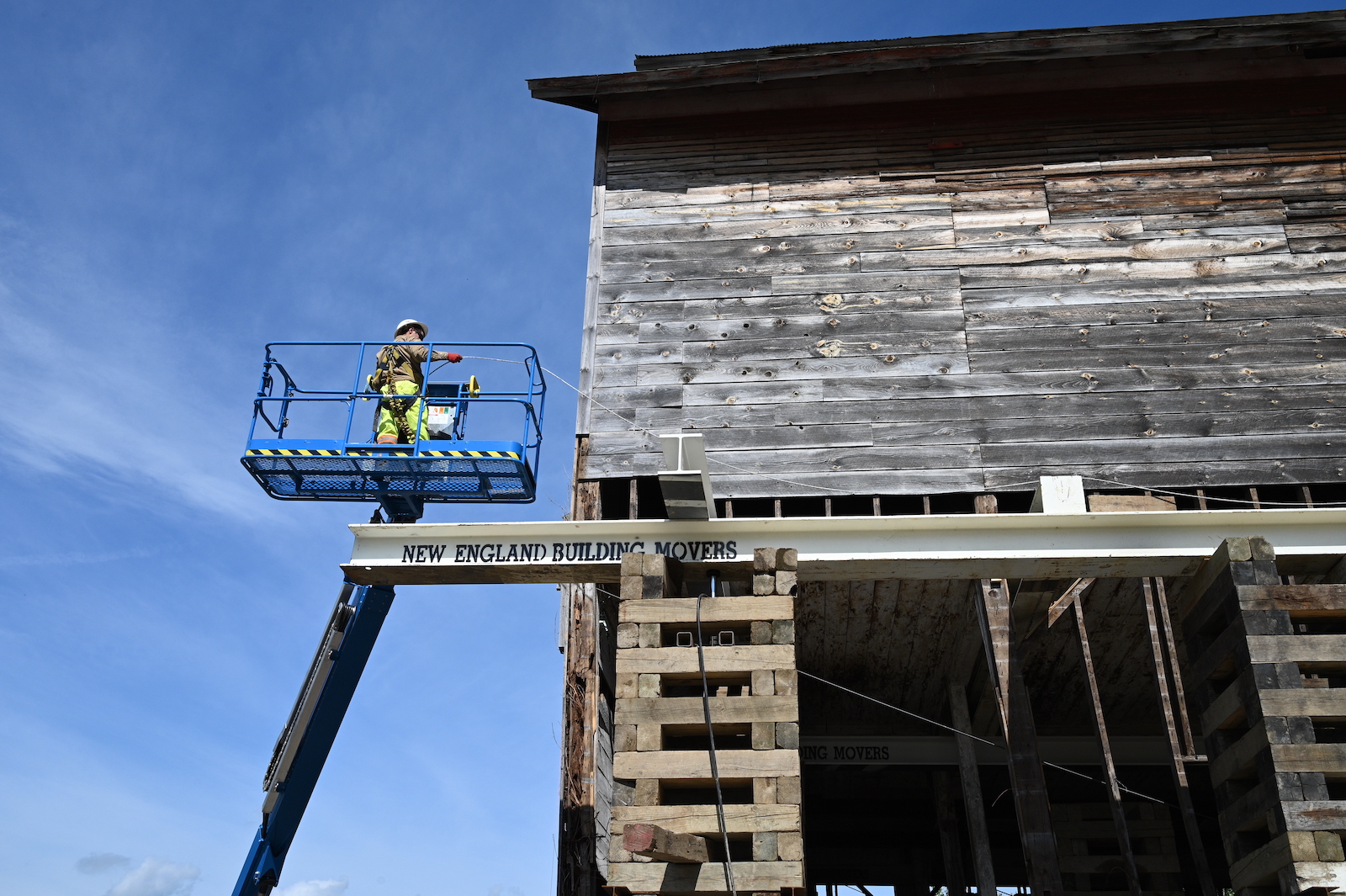Historic barn restoration, or a high-stakes Jenga game for giants? Right now, the East Monitor Barn looks like it could be both! But it wasn’t giants who put the 36 cribbing towers and 164,000 pounds of steel I-beams in place to support the now-levitating barn, it was an amazing team of normal-sized humans with the help of some specialized machinery.
Constructing Cribbing Towers
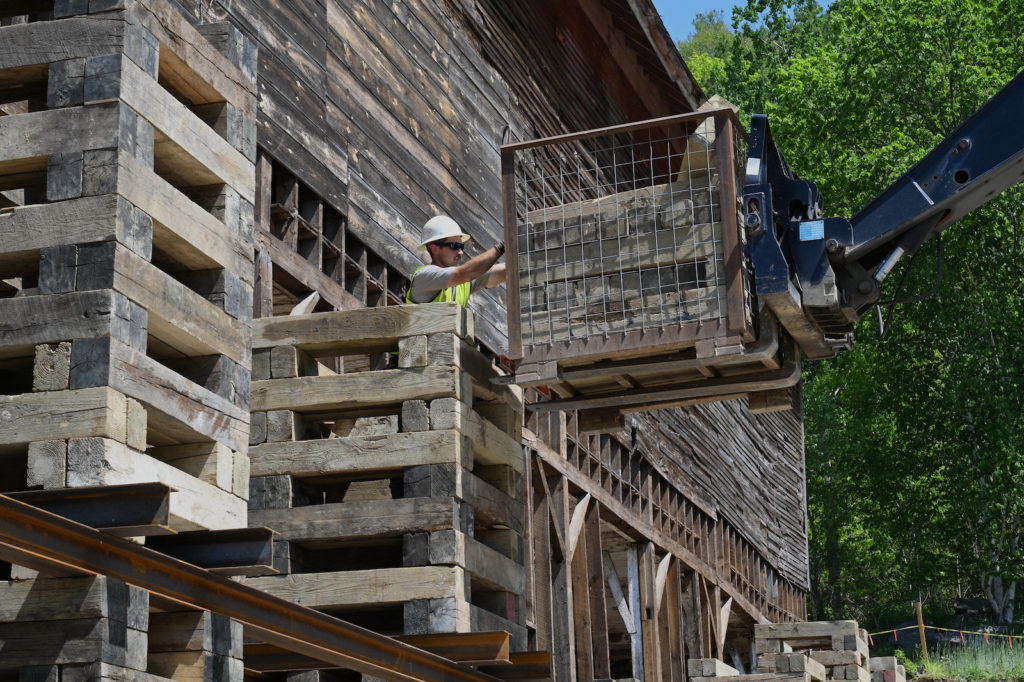
Lou Nop and the team at New England Building Movers were at the helm of this instrumental phase of the restoration. With precision, strength, and some acrobatics in safety harnesses, they constructed the towers by hand out of roughly 4,000 individual four-foot long blocks of wood.

The blocks below the unpainted I-beams are heavier hardwood and the blocks above are lighter softwood; the I-beams that transect them stiffen the towers and prevent wobble as a unit. The purpose of the cribbing towers is two-fold: 1) to support the steel beams, which in turn support the barn itself, and 2) to house the building jacks that lifted the roughly 500,000-pound barn into the air.

Flying I-Beams
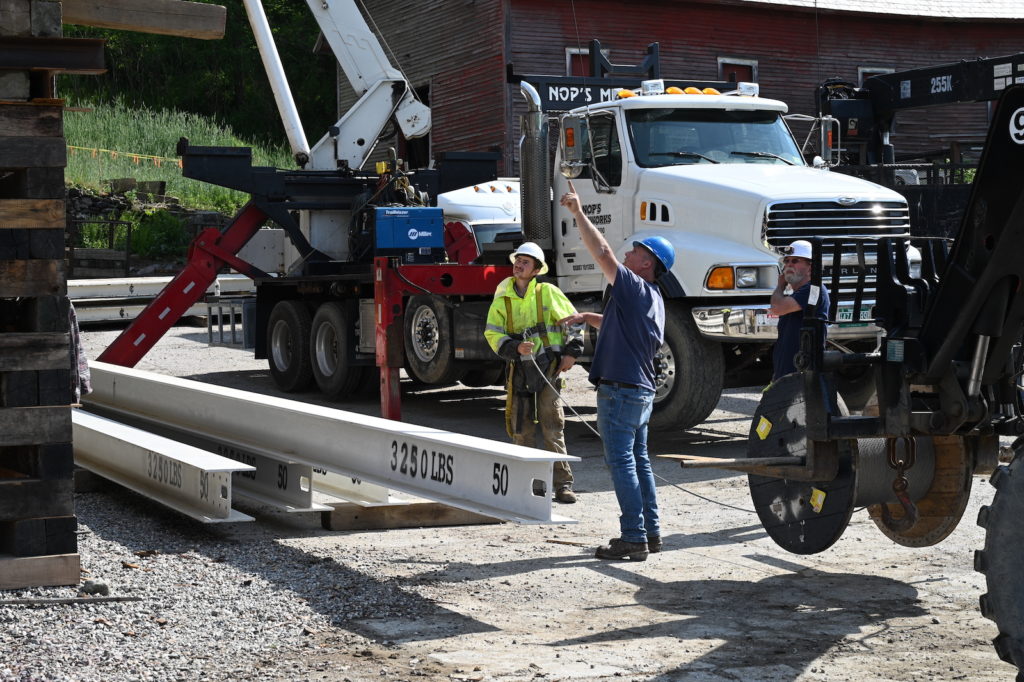
Building the towers was quite a feat, but Lou’s team didn’t stop there; what came next was just as impressive. Through a combination of math and machinery (a crane, to be exact), they positioned the long white beams onto the cribbing towers. Then came the challenging task of guiding the cross beams into place through the barn itself. Each beam needed to go into the barn at a specific location and come out the other side in the same spot. But, as we all know, the East Monitor Barn is distorted from the downward pressure of the hill into which it was built, making it very challenging to fine-tune the positioning of the beams.
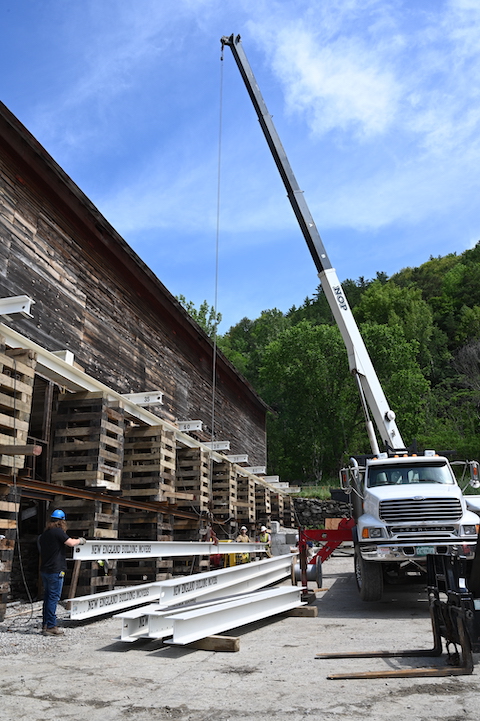
Remember, we’re talking about massive multi-ton beams dangling from a crane while being guided by hand through a 120+ year-old barn!
Throughout this process, Dan Lee, the Project Supervisor, coordinated with Lou’s crew to make sure their work dovetailed with the plan for the upcoming timber framing. For instance, the upper sill on the front of the barn needs to be replaced, so the team isolated it through a complicated grid of beams in order to jack it separately by an additional three inches. To make another game analogy, Eliot Lothrop, Lead Restorationist, likened this intricate stage to a game of chess.
Jacking

With the towers and beams in place, it was time for liftoff. Lou’s team placed building jacks into the cribbing towers on both sides of the barn. Each jack connected back to and was controlled by a large, yellow machine on each side of the structure (pictured). By turning on specific jacks, the team was able to lift the barn one corner at a time. Slowly but surely, the barn came up. It’s now roughly six inches off the foundation on all sides!

What’s Next?
With this pivotal phase in the rearview, we’re looking ahead to timber framers and stone masons arriving to work their magic. On June 7, 12 volunteers and four instructors from the Timber Framers Guild (a non-profit educational membership association dedicated to the craft of timber framing) will arrive for a week-long workshop to do hands-on work on the barn. Scratch Builders will also be instrumental in the framing phase. Stay tuned to this blog to learn more about these next stages of restoration!
